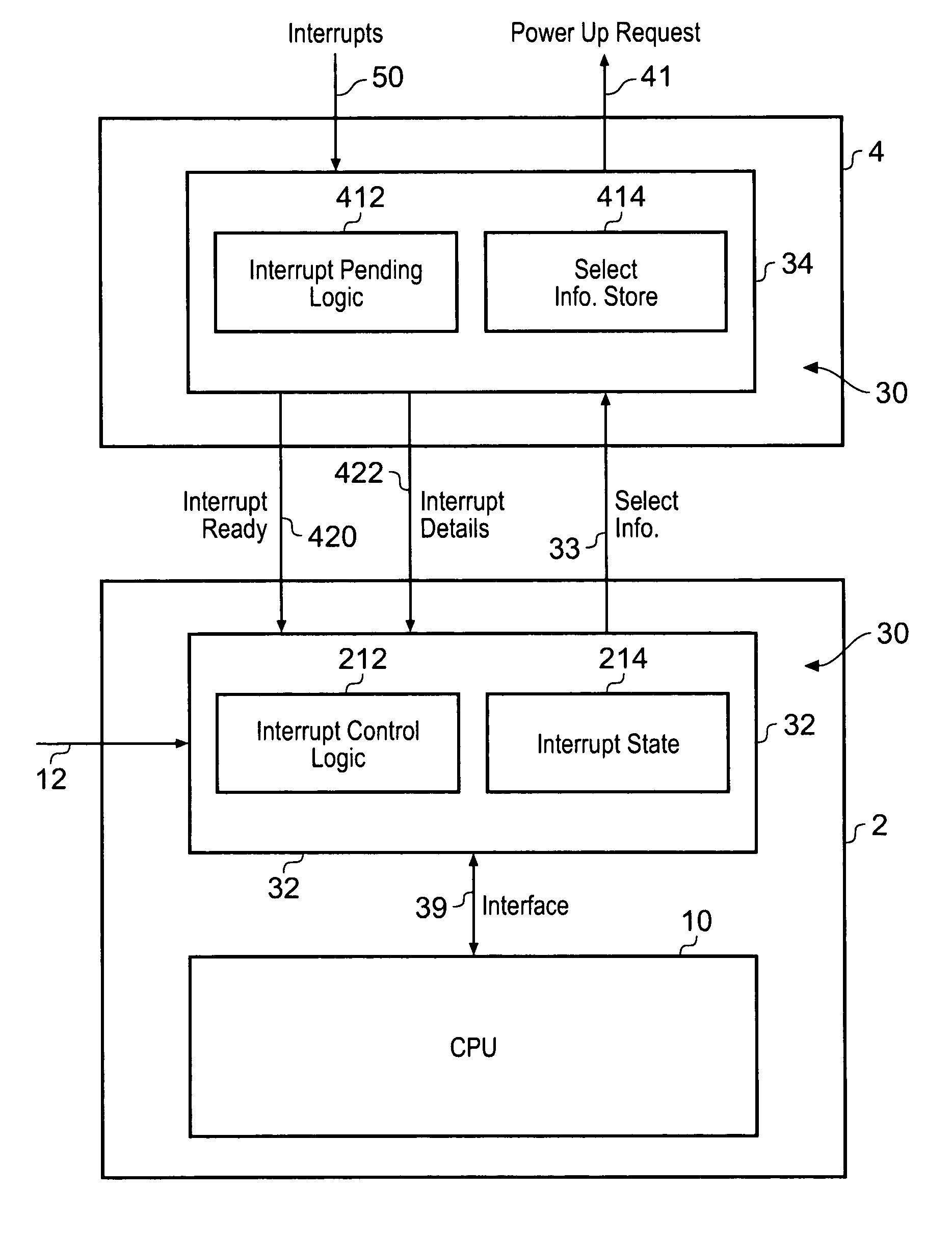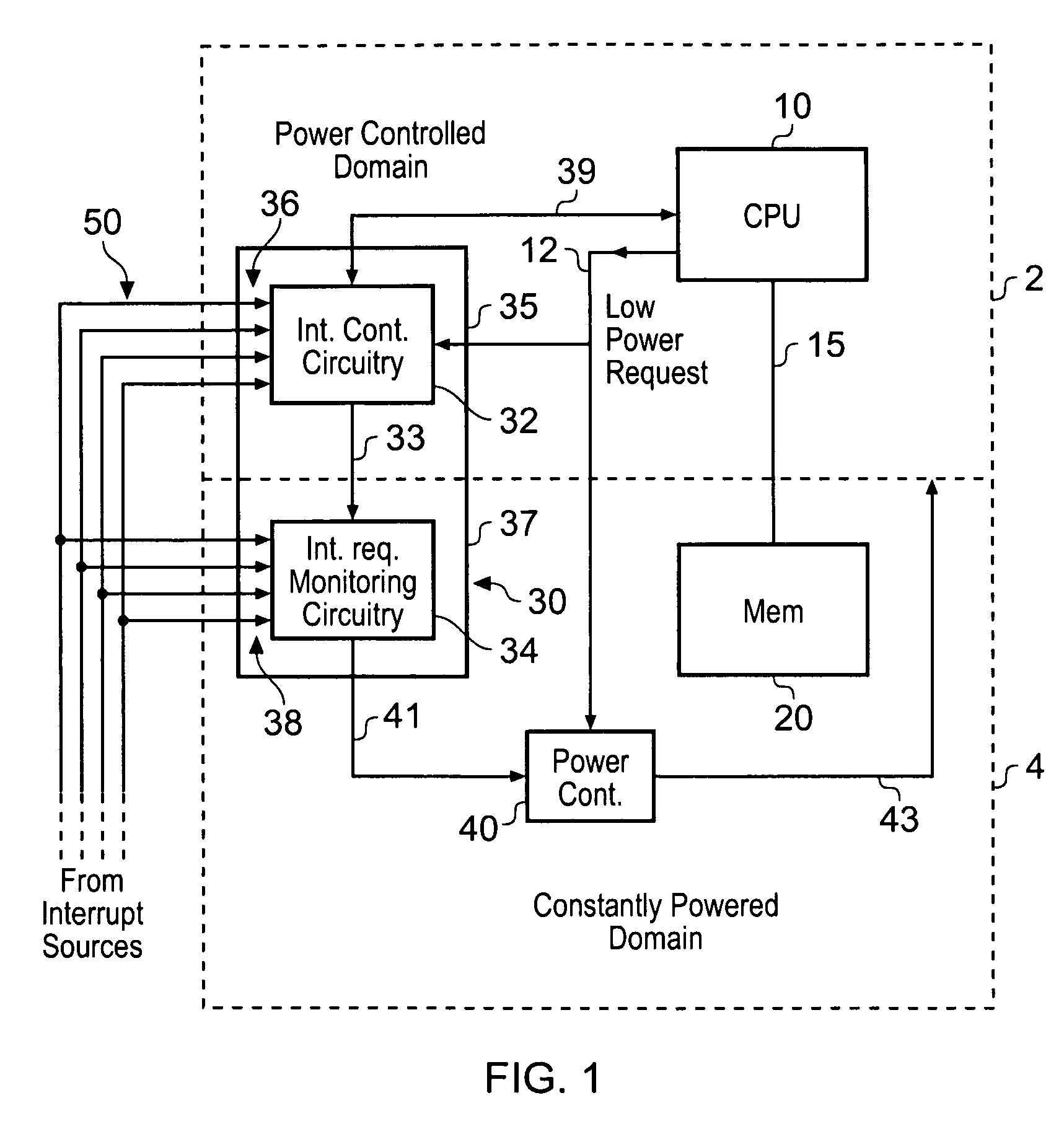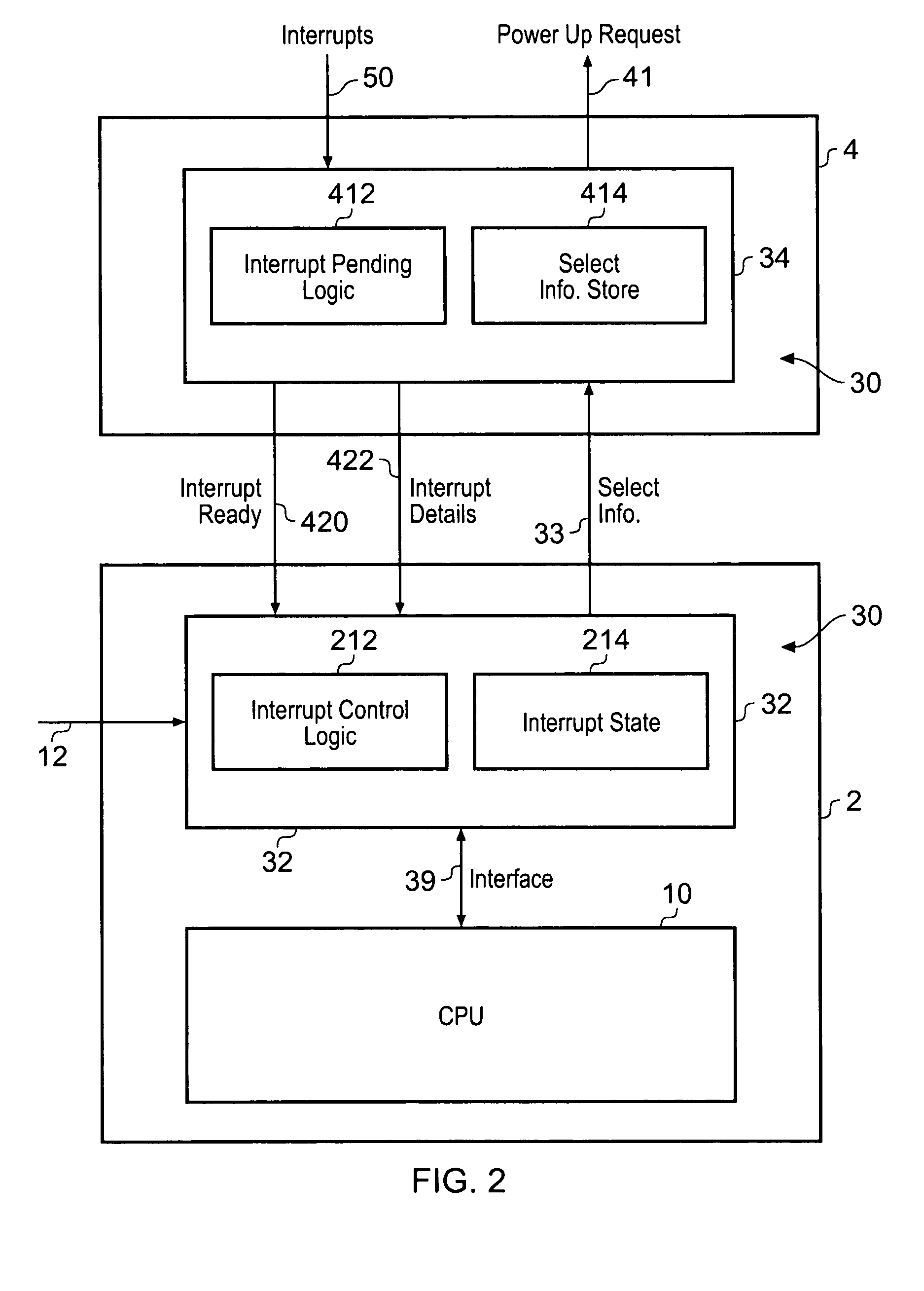Interrupt controller
a controller and interrupt technology, applied in the direction of instruments, liquid/fluent solid measurement, sustainable buildings, etc., can solve the problems of ultra low power design and interrupt controller consumption, and achieve the effect of saving power, saving a significant amount of power, and reducing the static power consumption of the interrupt controller
- Summary
- Abstract
- Description
- Claims
- Application Information
AI Technical Summary
Benefits of technology
Problems solved by technology
Method used
Image
Examples
Embodiment Construction
[0036]In FIG. 1, there is schematically illustrated an integrated circuit which is divided into two power domains. In particular, a power controlled domain 2 is provided which can be powered down in order to save power in a low power mode, and a constantly powered domain 4 is provided, which is not powered down in the low power mode. By dividing up the integrated circuit in this way, components of the integrated circuit which can safely be powered down when not required can be provided within the power controlled domain 2, while components which must be constantly powered in order to ensure correct functioning of the integrated circuit can be provided in the constantly powered domain 4.
[0037]In the power controlled domain 2, there is provided a central processing unit 10 for processing instructions and data. The central processing unit 10 can be powered down when no instructions and / or data are pending for processing without losing data or impeding function. Alternatively, the centr...
PUM
 Login to View More
Login to View More Abstract
Description
Claims
Application Information
 Login to View More
Login to View More - R&D
- Intellectual Property
- Life Sciences
- Materials
- Tech Scout
- Unparalleled Data Quality
- Higher Quality Content
- 60% Fewer Hallucinations
Browse by: Latest US Patents, China's latest patents, Technical Efficacy Thesaurus, Application Domain, Technology Topic, Popular Technical Reports.
© 2025 PatSnap. All rights reserved.Legal|Privacy policy|Modern Slavery Act Transparency Statement|Sitemap|About US| Contact US: help@patsnap.com



